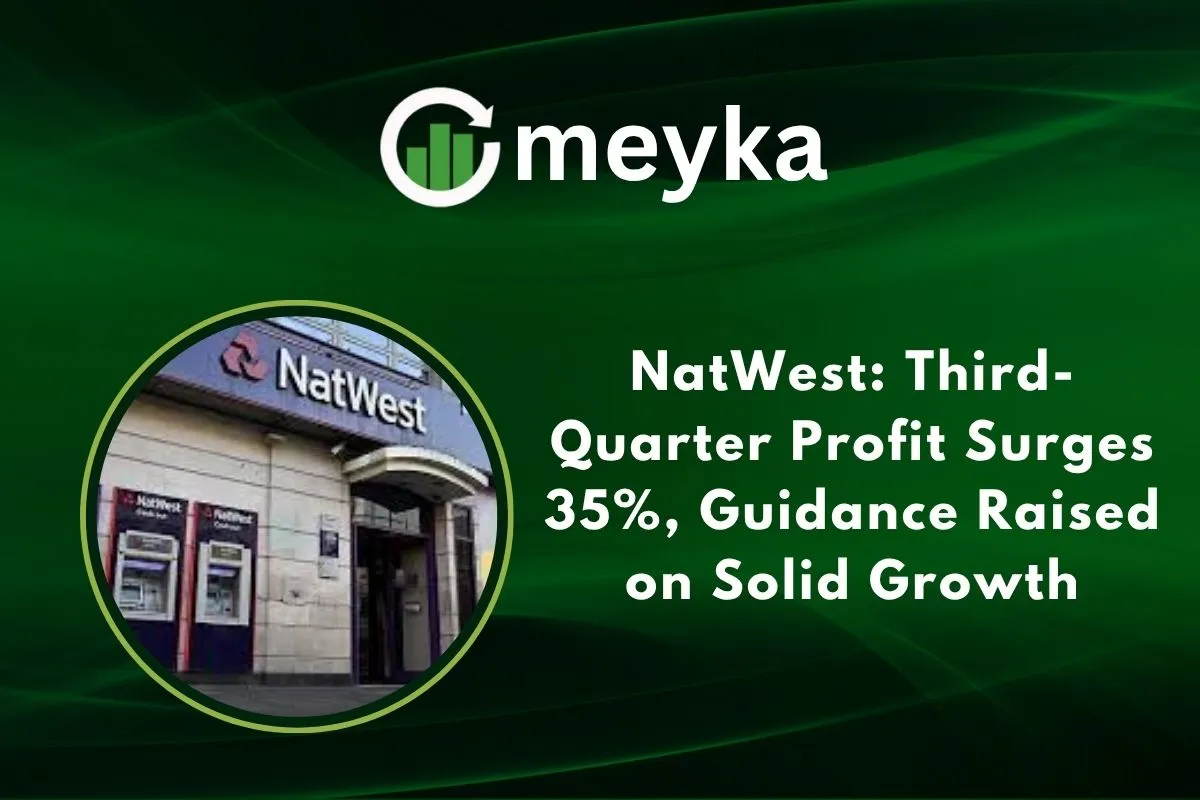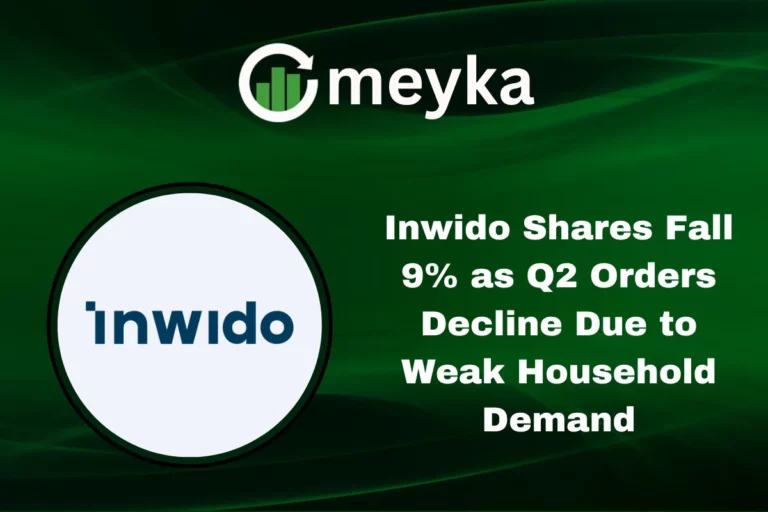NatWest: Third-Quarter Profit Surges 35%, Guidance Raised on Solid Growth
We from the finance desk write: NatWest has delivered a punchy third quarter. The bank reported a big rise in profit. Management has raised guidance. Investors cheered. This matters for the UK banking sector and for anyone watching mortgage and business lending trends.
Big numbers, simple story
NatWest posted roughly £2.2 billion in pre-tax profit for Q3. That was about 30–35% higher than the year-ago quarter. Total income also climbed strongly, driven by rising loan volumes and better margins. The market replied quickly, and NatWest shares hit multi-year highs on the news.
What the results show
Here are the main facts in plain language:
- Pretax profit: ~£2.2bn in Q3, up ~30% vs. last year.
- Lending growth: net lending rose by about £4.4bn in the quarter, including roughly £1.7bn of new mortgages.
- Wealth business: assets under administration rose to about £56bn, helping diversify income.
- Provisions: loan-loss provisions stayed low, impairments w and e modest relative to earlier years.
These numbers point to stronger core banking activity. More loans mean more interest income. That pushed operating profit higher.
Why profits rose, the drivers
Multiple factors drove the gain:
- Loan growth: Households and businesses borrowed more. Mortgages and commercial lending both showed momentum. Lenders earn from the spread between what they pay on deposits and what they charge on loans. More loans = more net interest income.
- Improved margins: NatWest’s net interest margin held up and ticked higher. That lifted income from everyday banking activity.
- Wealth & fees: The wealth arm (including private banking services) added fee income and assets, smoothing revenue swings. Wealth AUM growth helped the mix.
- Lower impairments: The bank booked relatively small credit charges in the quarter. That kept headline profit strong.
Put together, these forces meant a cleaner, broader earnings base. That convinced management they can aim hithat gher for the year.
The guidance upgrade: what changed
:atWest raised its full-year guidance. The bank now expects income excluding notable items around £16.3 bito be billion and has lifted its return-on-tangible-equity (RoTE) target to above 18% (from >16.5%). This is significant. It signals the board and management see durable momentum into the next year.
For investors, higher guidance usually means better returns ahead, if the bank delivers. For management, it’s a vote of confidence in strategy: focus on UK retail, mortgages, business lending, and wealth.
Market reaction and context
Markets responded well. Shares hit a multi-year high as traders priced in stronger profits and the upgraded targets. The bounce also reflects a wider trend: higher interest rates in recent years have helped banks’ margins while defaults remain low so far. Still, markets watch political and policy risks closely.
Risks and cautionary points
The results are strong, but not risk-free. Keep these in mind:
- Macro risk: If the UK economy weakens, lending growth could slow and impairment charges could rise.
- Policy risk: Political plans, for example, any targeted tax on banks or changes announced in the November budget, could hit profits.
- Deposit trends: Although lending has grown, deposits can shift. Rising deposit costs would pressure margins.
- Execution risk: Scaling wealth and fee businesses requires consistent execution and competitive product offerings.
We must weigh the upbeat headline numbers against these risks.
Strategic implications
NatWest’s Q3 shows the bank reaping the benefits of a defined strategy. After returning to full private ownership earlier this year, management has leaned into traditional strengths: mortgages, business lending, and wealth services. The upgraded RoTE target shows a push for shareholder returns. It also hints that NatWest could be open to opportunities that accelerate growth, including selective deals that add scale or margins.
What this means for customers and the UK economy
More lending to households and firms usually supports spending and investment. If NatWest keeps growing lending responsibly, it can help local economies. But higher lending also needs sound credit risk management. For customers, a stronger NatWest may mean more product choice, but it could also mean stricter underwriting if the bank tightens risk standards.
Conclusion
NatWest’s Q3 performance was solid. The bank grew loans, improved margin, and kept credit costs low. That combination pushed profit sharply higher and gave management confidence to lift guidance. For investors, the story is attractive, but it is not guaranteed. The wider economy and policy moves will shape whether this momentum lasts. We from the finance desk will keep watching two things: loan quality and the bank’s ability to convert higher income into sustained returns. If NatWest can hold both, the upgraded guidance may become reality rather than hope.
Disclaimer:
The content shared by Meyka AI PTY LTD is solely for research and informational purposes. Meyka is not a financial advisory service, and the information provided should not be considered investment or trading advice.






